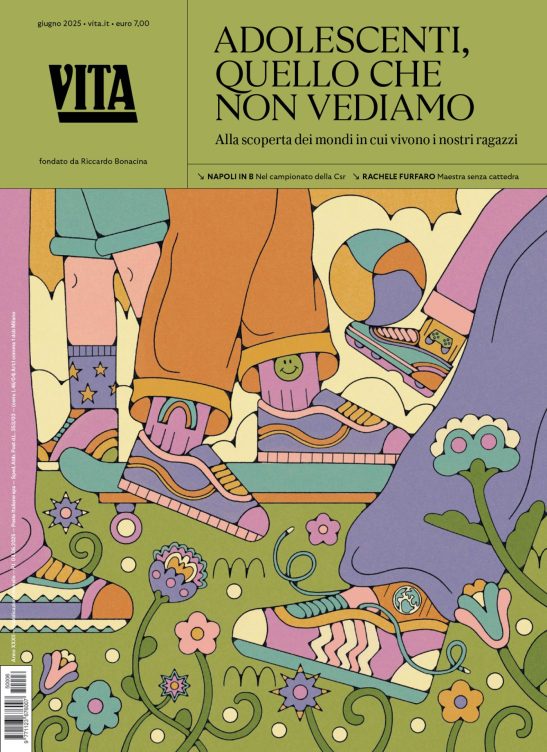Non profit
Profit making dogooders
Vita Europe interviews Tony Pigott, co-founder of Brandaid, on the organizations business model and on its work with local artisan communities in Haiti.

Do you need to be non profit to do good?
Actors in and outside the social economy have been heatedly debating this issue. Many argue that companies with social missions should be allowed to organize themselves as low profit yielding corporations. Many worry, however, that adding a financial bottom line to a social organization will distract it from its core social mission.
Recently, countries like the U.S and the UK have enacted new legislation which recognizes a new form of corporation. In the U.S this type of entity is known as a Low Profit Limited Liability Company and in the UK it is called a Community Interest Company.
Canada is another country that is looking to add this type of organization to its legislative structure.
Some hybrid organizations have already been set up under existing corporate legislation. Brandaid is one such organization.
While it’s founded on a social mission, Brandaid is set up as a profit sharing company.
Vita Europe spoke with Tony Pigott, the co-founder of Brandaid, to find out more about this Canadian organization’s use of market driven principles and its plans to help re-launch the Haitian economy.
How was Brandaid started?
Brandaid started as an idea Cameron Brohman and I had about five years ago and it eventually morphed into the Brandaid project.
After attending the University of Western Ontario together I went into advertising and Cameron went into Haiti. There he had a lot of experience in development issues around poverty and media, and he lived there for more than 20 years. During this time I worked in marketing and advertising. When Cameron moved back to Canada he and I began to seriously assess what we might do to help relieve poverty in developing countries. It was grounded in the belief that we should use the power of marketing and brands to engage with artists and artisans in poor countries.
Why do you believe so much in the work of artisan communities?
The handmade economy and the artisan sector in particular is really important in these regions. It employs a lot of people and when it works it really works well. For example, in a market like Morocco, where the artisan sector has thrived, it is now 19 percent of the GDP. So the artisan sector has a lot of potential in economic development terms, and it has a lot of heart as it relates to cultural recognition.
The problem with this sector is that it gets commoditized. Artisan communities are isolated and they are not given the value they really deserve.
How does Brandaid work?
Brandaid is a profit sharing business.
We create the collection with the artisan communities. We buy these collections from them, at their asking price. Then, we take these collections and we take over the responsibility of selling them.
Brandaid has an incorporated for profit business. Once it becomes profitable, profits will be shared back into the communities on a prorated basis.
The artisans win in a number of ways. One, they have a predictable business flow, because we develop these collections with them and we buy them in total up front. They end up with marketing and brand assets that they own and represent them very well in the market place. Then downstream, if and when the business begins to take off and becomes profitable they get a piece of the action.
How successful has Brandaid been in preventing the commoditization of this sector in Haiti?
Well the two sectors we have worked with haven’t been ripped off.
Opportunities have come their way. For example companies like The Pottery Barn and William Sonoma currently have samples we had created from our two communities and they are looking at them now as product lines for the fall.
These opportunities came out when potential distributers saw the beauty of the work when we presented it in exhibitions, in New York and Los Angeles.
Why did you choose to partner with UNESCO?
UNESCO has an expertise in creative industries and artisans. In fact, they created a thing called the UNESCO Award of Excellence. They have gone around to regions in the developing world and held juried assessments of the best artisan microenterprises. They have awarded this to more than 450 artisan communities.
The problem is they give the award but they don’t have the capacity to help these artisan groups to do anything with it, so there you have expectation.
Brandaid uses that list as well as other sources to identify artisan communities that we think we should really work with to bring brand identity, assets and then to launch.
How has Brandaid’s initiative changed since the earthquake?
The earthquake really got us to focus back on Haiti and look at the entire sector as an important engine for Haiti’s post earthquake recovery. It’s a key sector in the Haitian handmade economy. There are thousands and thousands of artisans there, at one point in its history artisan was the third biggest export of the country. It’s also a source of pride and cultural identity.
We believe it should play a prominent role in the countries recovery, the economic recovery and also the cultural recovery.
Since the earthquake we have gone back in and laid out a frame work where we want to launch multiple artisan communities onto the global market. We are mobilizing a whole corporate and foundation based sponsorship group to lift the artisan sector, to get it going, to start people producing again.
How important do you think it was that Brandaid was in Haiti before the earthquake – in terms of the role you now play in helping to rebuild the country?
I think it was hugely important in terms of setting precedence. What we have done is demonstrate that by branding and marketing in artisan communities we can elevate the value of what they do and the opportunities that come their way. It is timely given that we have shown this can work. Now, we can tell that story. I think that it can inspire people to see that it is an important and viable strategy for a whole list of artisan communities and for the sector overall.
What is your proudest moment?
The proudest moment that I have had is being with the two Master Artisans when their art was shown at a high profile Vanity Fair event and them being feted like the artists that they really are. That experience was not only an eye opener for me but also for them. They saw the power of proper marketing and presentation in elevating the value of what they did.
17 centesimi al giorno sono troppi?
Poco più di un euro a settimana, un caffè al bar o forse meno. 60 euro l’anno per tutti i contenuti di VITA, gli articoli online senza pubblicità, i magazine, le newsletter, i podcast, le infografiche e i libri digitali. Ma soprattutto per aiutarci a raccontare il sociale con sempre maggiore forza e incisività.
